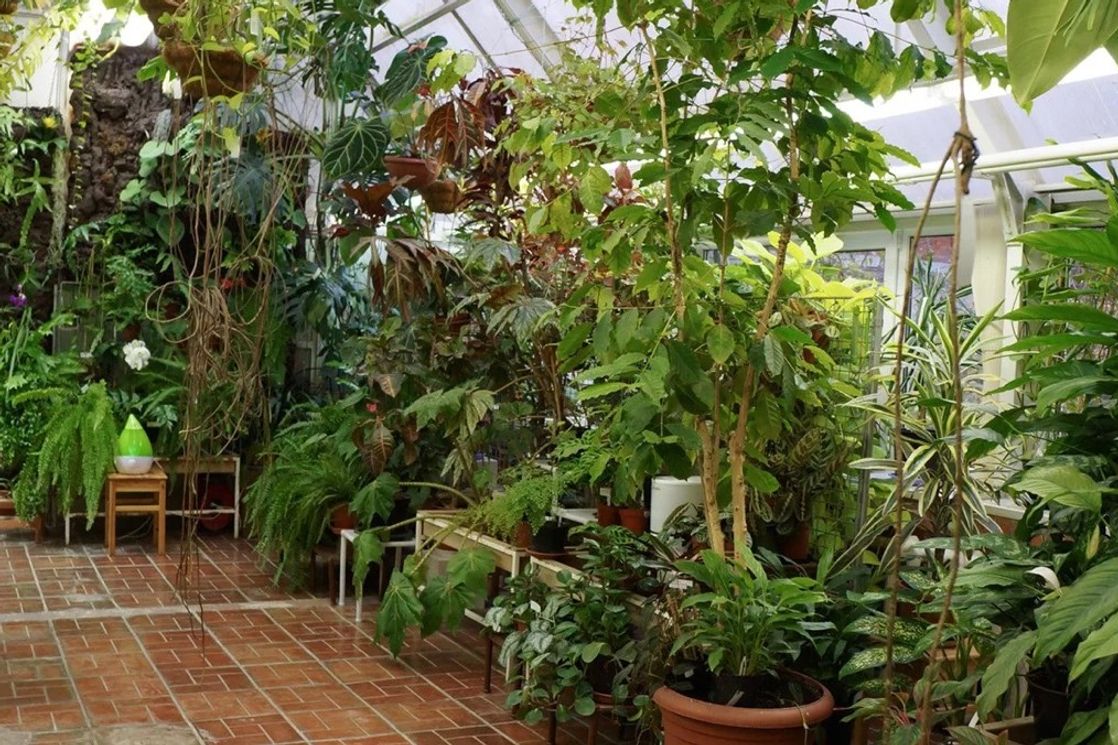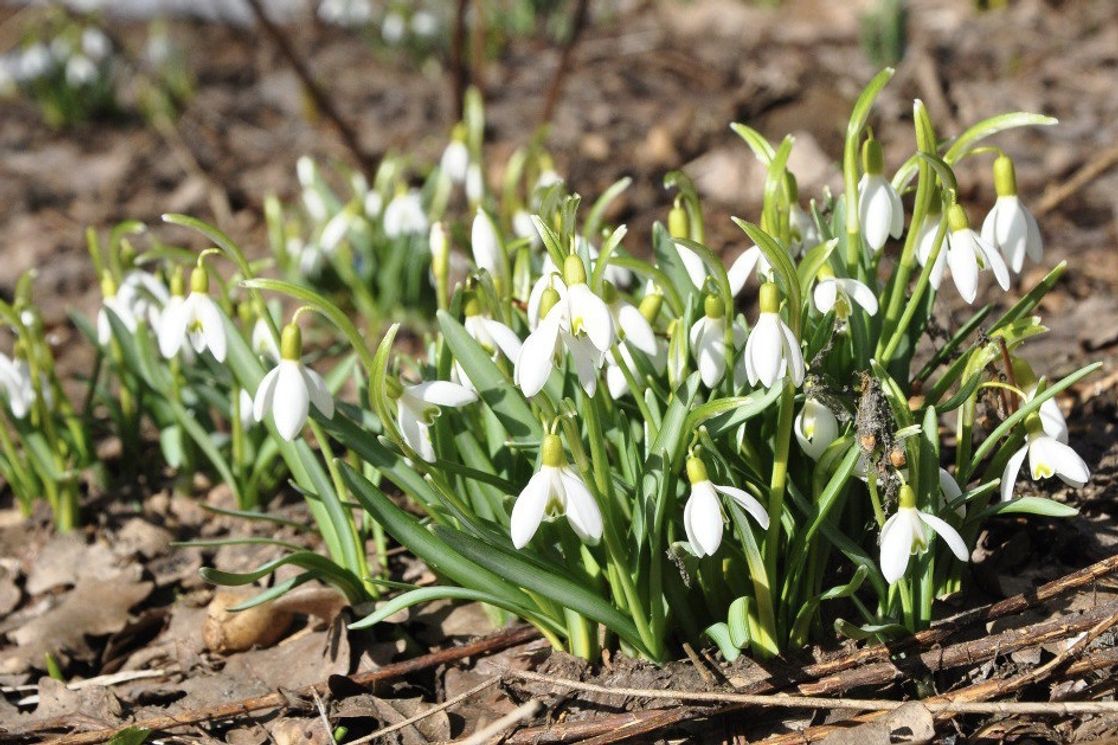Pieces of Paradise in the Concrete Jungle of a Big City

Moscow is a huge city, and in everyday life, all we see around are stone buildings, subways, and roads. If you are missing the sight of green leaves and flowers at the end of the long winter, we recommend visiting one of the city's greenhouses.
Apothecary's Garden of the Botanical Garden of Moscow State University
The garden was founded in 1706 by Peter I for medicinal plants. In the 19th century, the collection expanded and, in addition to medicinal plants, other plants appeared. This is precisely why the Moscow State University chose this place, since the garden’s collection had a large selection of plants important for botany and research.
Nowadays, in the garden you can find a variety of plants: temperate trees, ancient oaks, tropical plants, and even carnivorous plants.
Blooming Tulips at the Rehearsal of Spring Exhibition
From March 2 to 17 there will be an annual exhibition ‘Rehearsal of Spring’. At this time in the park there will be about 10,000 tulips as well as other flowers, such as daffodils, lilies of the valley, and lilacs. In addition, you can watch snowdrops and magnolia.
Address: 26/1 Prospekt Mira (entrance through the shopping centre at 28 Prospekt Mira)
Open: Open daily.
10am – 7pm: from November to April;
10am – 9pm: from September to October;
10am – 10pm: from May to August
Tickets:
Weekdays – 300 roubles per person;
Weekends and Holidays – 400 roubles per person;
Students` tickets:
Weekdays – 200 roubles;
Weekends – 250 roubles
*An annual subscription for nature lovers is also available and costs 4000 per year
**Tickets can be purchased on the website
Greenhouses at the Tsaritsyno Museum-Reserve
The Tsaritsyno Greenhouse Complex is the only estate greenhouse complex in Moscow that has a 250-year history.
Today, park employees honour traditions and cultivate exotic plants in accordance with preserved records. Exotic fruits ripen all year round here, and flowers are in bloom. The greenhouse also hosts educational environmental workshops and excursions for children and adults.
Tsaritsyno is a palace complex that includes greenhouses, a historic landscape park with ponds and pavilions, and park areas with flower beds and a light and musical fountain (which operates in summer). The entire museum-reserve covers 405 acres.
Address: 1/31 Dolskaya Ulitsa
Open: Wed – Thu: 10am—6pm; Fri – Sat: 10am—8pm; Sun: 10am—6pm Mon – Tue: days off
Tickets:
Standard ticket: 170 roubles
Student ticket: 90 roubles
* Tickets can be purchased at the museum's ticket offices or on the website
Florarium in Zaryadye Park
In Zaryadye Park, located in the city centre, there is a Florarium, a multi-tiered experimental greenhouse shaped like a funnel. The greenhouse uses the aeroponic method of cultivation, with no soil used in the phytoboxes and nutrients being supplied to the plants in the form of an aerosol.
The Florarium features rare, medicinal and decorative plants from various natural environments and landscapes in Russia, from Kaliningrad to Sakhalin.
Address: 6/1 Varvarka Ulitsa
Open: Tue – Sun: 11am–7pm
Mon – day off
Tickets:
Standard ticket: 500 roubles
Student ticket: 400 roubles
* Tickets can be purchased at the museum's ticket offices or on the website
** When purchasing a ticket, it is important to choose not only the date, but also the time
Biological Museum
The greenhouse at the Timiryazev State Biological Museum is a collection of more than 300 plants from various climate zones, ranging from the tropics to deserts. Although not large, the greenhouse is popular for its collection of carnivorous plants, which are safe for people as they feed on insects. Visitors can admire both exotic plants and those that are native to or found near Moscow.
An event called ‘A Night at the Museum’ will be held in Moscow in May. During this event, the Biological Museum invites participants to immerse themselves in a tropical forest experience complete with simulated rain.
Address: 15 Malaya Gruzinskaya Street
Open: Mon – day off
Tue – Wed, Fri – Sun: 10am – 6pm
Thu: 12pm – 9pm
The entrance to the museum stops an hour before the museum closes.
Closed on the last Tuesday of every month.
Tickets:
Standard ticket: 340 roubles
Student ticket: 170 roubles
Old Stock Greenhouse of the Main Botanical Garden of the Russian Academy of Sciences
The Old Stock Greenhouse is a unique historical structure that houses over five thousand species and varieties of plants from the tropics and subtropics. The exhibition is arranged so that visitors can embark on a journey through exotic regions: in the tropical halls, one can see palms, figs, cocoa, and cassava, while in the subtropics, there are columnar cypresses, American agaves, cacti, yuccas, African aloes, milkweeds, and pelargoniums. Here you can see the royal strelitzia, a symbol of South Africa, and the pink lapageria, a symbol of Chile.
Additionally, the Stock Greenhouse is home to Russia's largest baobab and cycads—dinosaurs' contemporaries that have survived in nature in Central America, Australia, South Africa, and Southeast Asia.
Guided tours are held on weekends at 12:30 pm, 2:00 pm, 3:30 pm, and 5:00 pm for all visitors who have purchased an entrance ticket. The exhibition part of the greenhouse is open year-round and hosts tours, workshops, lectures, and other activities.
Address: 4 Botanicheskaya Ulitsa, Building 2.
Open daily except Mondays.
Opening hours:
- From February 15 to March 15: 11:00 am–6:00 pm (ticket office closes at 5:30 pm)
- From March 16 to September 15: 11:00 am–7:00 pm (ticket office closes at 6:30 pm)
- From September 16 to October 15: 10:00 am–6:00 pm (ticket office closes at 5:30 pm)
- From October 16 to February 14: 10:00 am–5:00 pm (ticket office closes at 4:30 pm).
Tickets:
350-450 RUB; student ticket 200-250 RUB
Text by Polina Safronova, Polina Sukhacheva and Olga Timofeeva, bachelor’s students of Foreign Languages and Intercultural Communication, interns at the HSE University English website team



